Nature’s symphony is incomplete without the enchanting melodies of songbirds. From the forests to our backyards, these feathered virtuosos fill the air with their captivating tunes. In this comprehensive guide, we’ll explore the world of birds with the most beautiful songs, delving into their characteristics, habitats, and the science behind their melodious voices.
Table of Contents [show]
The Art of Avian Vocalization
Before we dive into our list of the most melodious birds, it’s essential to understand the basics of bird songs and calls.
What Makes a Bird’s Song Beautiful?
Beauty, as they say, is in the ear of the beholder. However, certain qualities generally contribute to what humans perceive as a beautiful bird song:
- Complexity: Songs with multiple notes and variations tend to be more appealing.
- Clarity: Clear, pure tones are often preferred over harsh or raspy sounds.
- Rhythm: A pleasing rhythm or pattern can make a song more memorable.
- Duration: Longer songs with various phrases are typically considered more beautiful.
- Emotion: Songs that evoke positive emotions or memories are often perceived as more beautiful.
The Difference Between Songs and Calls
It’s important to distinguish between bird songs and calls:
- Songs: Typically longer, more complex vocalizations used primarily for courtship and territorial defense.
- Calls: Shorter, simpler sounds used for communication, such as alerting others to danger or maintaining contact within a flock.
Top 10 Birds with the Most Beautiful Songs
Now, let’s explore some of the world’s most renowned avian vocalists. Keep in mind that beauty is subjective, and this list is based on popular opinions and scientific studies.
1. Common Nightingale (Luscinia megarhynchos)

The Common Nightingale’s song is renowned for its rich variety and exceptional beauty. Often described as the most beautiful in the world, the nightingale’s song is a complex and highly expressive melody. This small bird produces a wide range of notes and phrases, creating an intricate and enchanting tune. The nightingale’s song can be heard during the night and early morning, adding a magical quality to the natural soundscape. Its ability to sing with such diversity and emotion sets it apart, making it a true virtuoso of the avian world.
Key Features:
- Song Characteristics: Complex, flute-like melodies with over 200 different song types
- Habitat: Woodlands and forests in Europe, Asia, and North Africa
- Best Time to Hear: Late evening and early morning during breeding season (April to June)
2. Wood Thrush (Hylocichla mustelina)
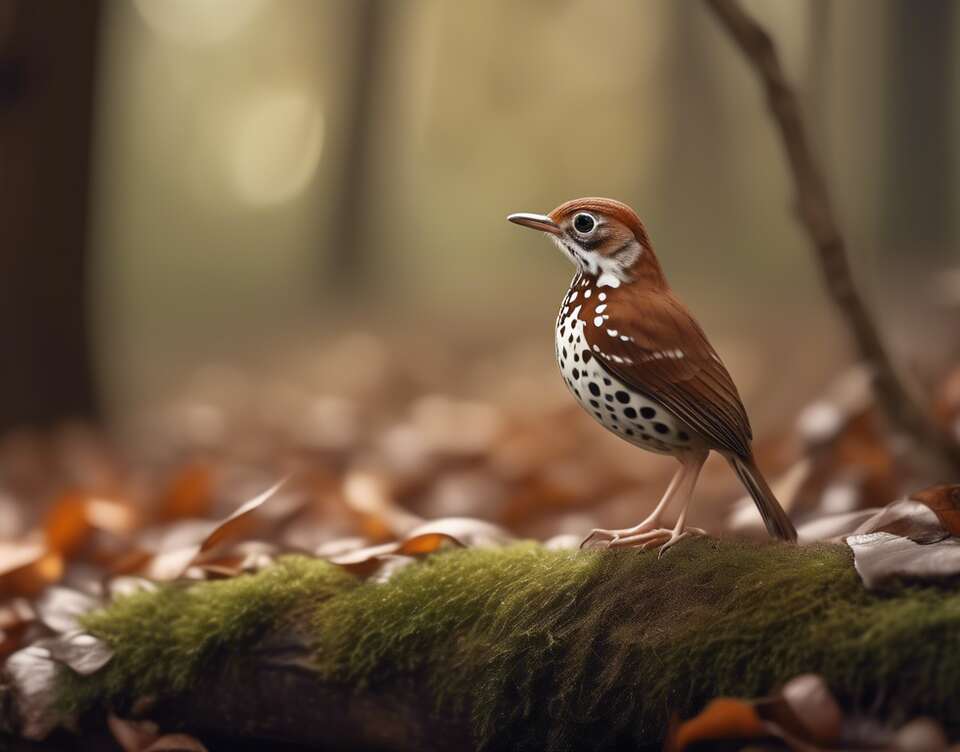
The Wood Thrush, known for its enchanting song, produces a melodious series of flute-like notes that echo through forests during the spring and summer months. Its song is often described as ethereal and flute-like, consisting of a series of clear, ringing phrases that can be heard echoing through the woodland canopy. This bird’s vocal talents have earned it admiration among birdwatchers and musicians alike, adding a serene and natural soundtrack to North American woodlands.
Key Features:
- Song Characteristics: Flute-like phrases with a distinctive “ee-oh-lay” pattern
- Habitat: Deciduous and mixed forests in eastern North America
- Best Time to Hear: Dawn and dusk during breeding season (May to August)
3. European Blackbird (Turdus merula)
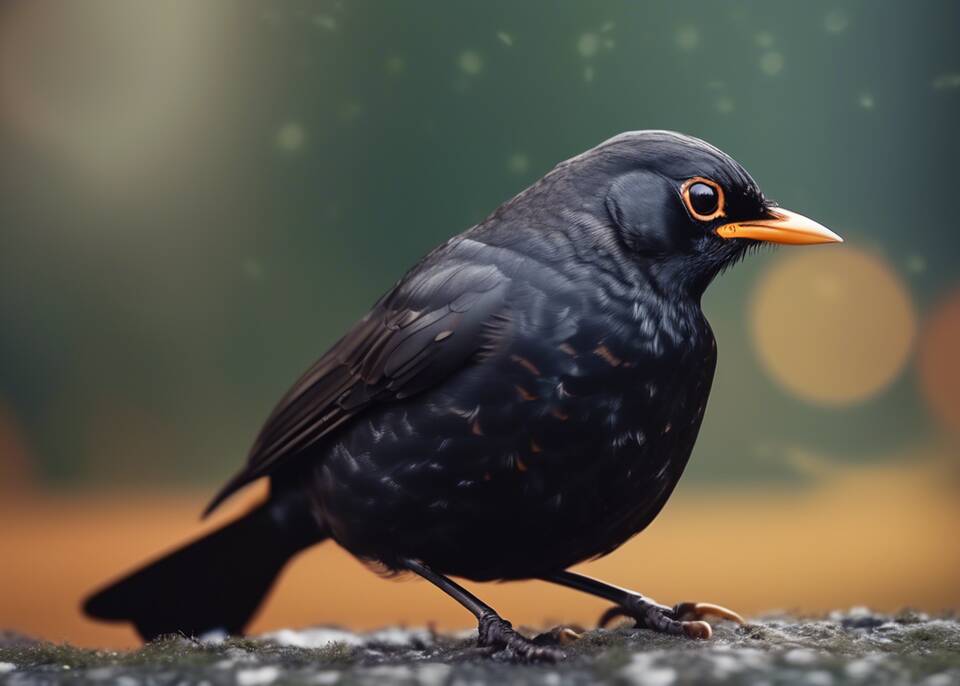
The European Blackbird, known for its melodious and flute-like song, captivates listeners with its clear and richly varied vocalizations. Often heard singing from prominent perches like treetops or rooftops, the male blackbird’s song is particularly striking during the breeding season. Its repertoire includes a mix of whistles, trills, and mimicry of other bird species, creating a captivating and expressive melody. This musical prowess has made the European Blackbird a beloved fixture in European gardens and parks, where its song adds a delightful charm to urban and rural landscapes alike.
Key Features:
- Song Characteristics: Rich, flute-like notes with a wide repertoire of melodies
- Habitat: Gardens, parks, and woodlands across Europe
- Best Time to Hear: Early morning and evening, especially during spring
4. Rose-breasted Grosbeak (Pheucticus ludovicianus)
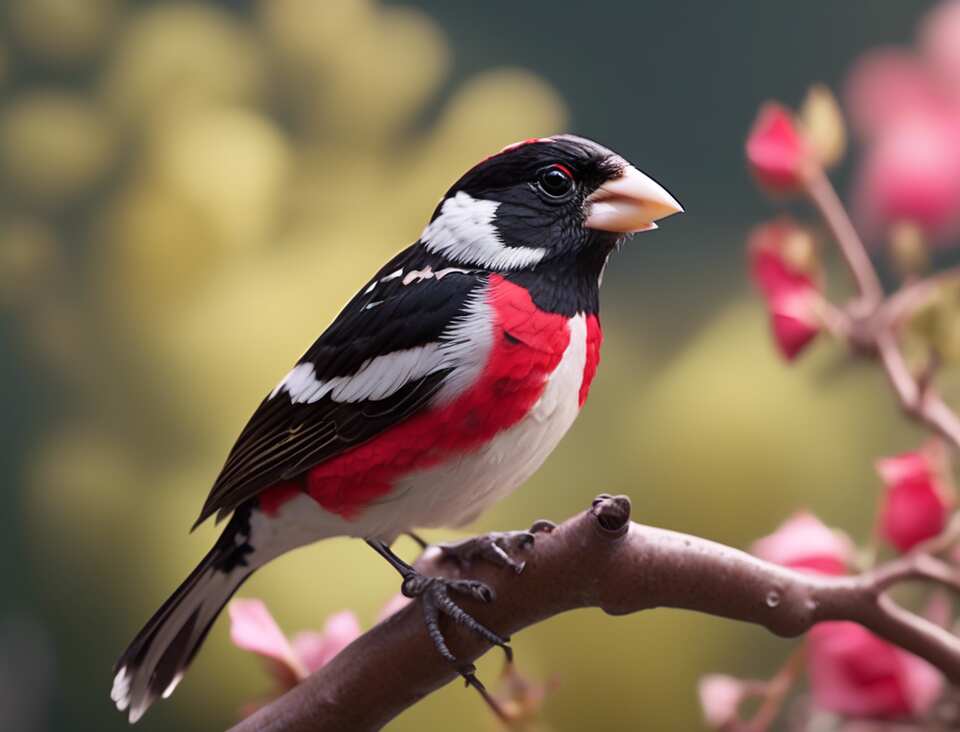
The Rose-breasted Grosbeak, a striking bird of North American forests and woodlands, is renowned for its beautiful and flute-like song. The male Grosbeak’s melodious tunes are a delightful blend of clear, whistled notes that resonate through the trees during the breeding season. Its song is often described as cheerful and musical, with a distinctive quality that distinguishes it from other bird songs in its habitat. Birdwatchers and nature enthusiasts alike are drawn to the Grosbeak’s captivating song, which adds a serene and melodic soundtrack to spring and summer mornings in its range.
Key Features:
- Song Characteristics: Series of clear, warbling phrases often likened to a “drunk robin”
- Habitat: Deciduous and mixed forests in eastern and central North America
- Best Time to Hear: Spring and early summer during breeding season
5. Australian Magpie (Gymnorhina tibicen)
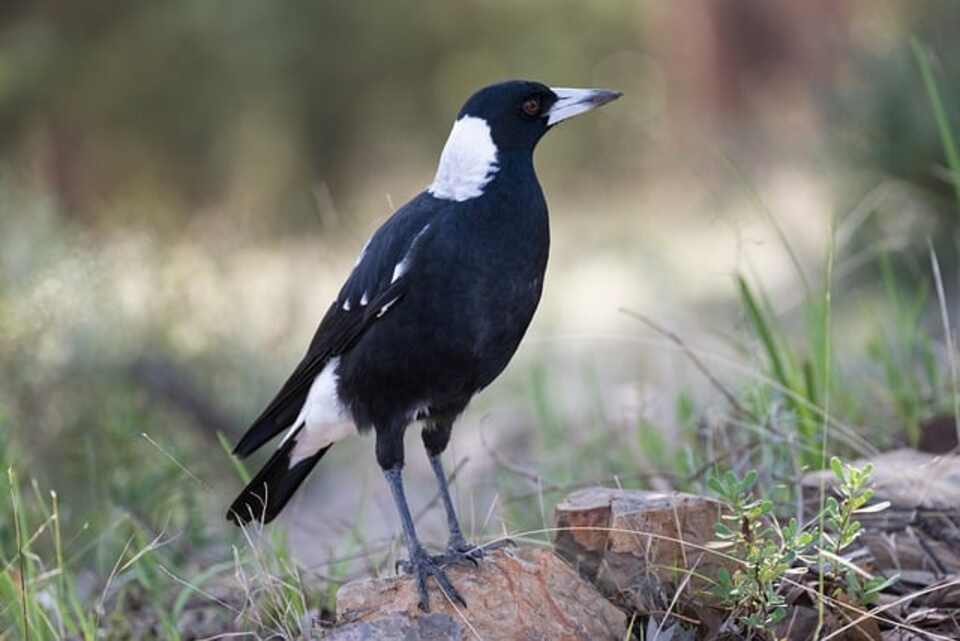
The Australian Magpie, known for its melodious and complex vocalizations, is celebrated for its remarkable song. Its calls range from melodious warbling to mimicry of other bird species and even human sounds. The Magpie’s song is not only beautiful but also serves important social functions within its flock, helping to establish territory and maintain social bonds. This iconic Australian bird’s ability to produce such a diverse and captivating array of sounds has endeared it to both locals and visitors, making it a cherished part of the Australian landscape and cultural identity.
Key Features:
- Song Characteristics: Flute-like warbling with a wide range of notes and melodies
- Habitat: Open areas across Australia and southern New Guinea
- Best Time to Hear: Year-round, with increased frequency during breeding season
6. Eurasian Skylark (Alauda arvensis)
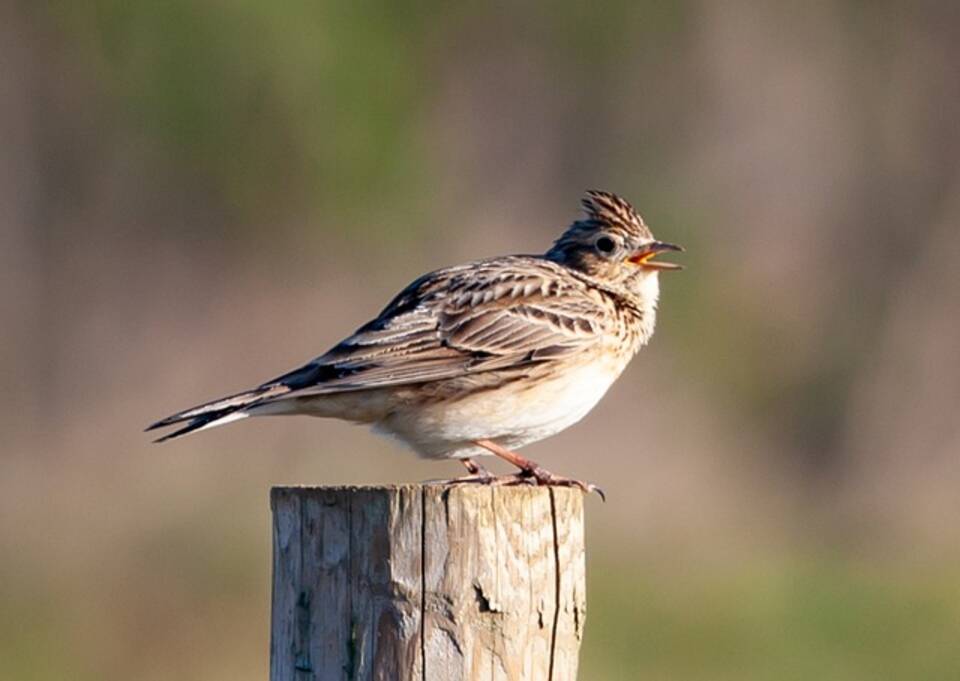
The Eurasian Skylark, famed for its exuberant and uplifting song, is a symbol of the open countryside in Europe and Asia. Its melodious and continuous song, delivered during soaring flight, consists of trills, warbles, and often incorporates mimicry of other bird species. Skylarks are known for their impressive vocal stamina, with males often singing for extended periods to attract mates and defend territories. This enchanting song, combined with the bird’s aerial displays, adds a magical quality to rural landscapes, making the Eurasian Skylark a cherished part of cultural and natural heritage across its range.
Key Features:
- Song Characteristics: Continuous, melodious warbling that can last for several minutes
- Habitat: Open countryside, farmland, and coastal areas across Europe and Asia
- Best Time to Hear: Spring and summer, especially during courtship displays
7. Hermit Thrush (Catharus guttatus)
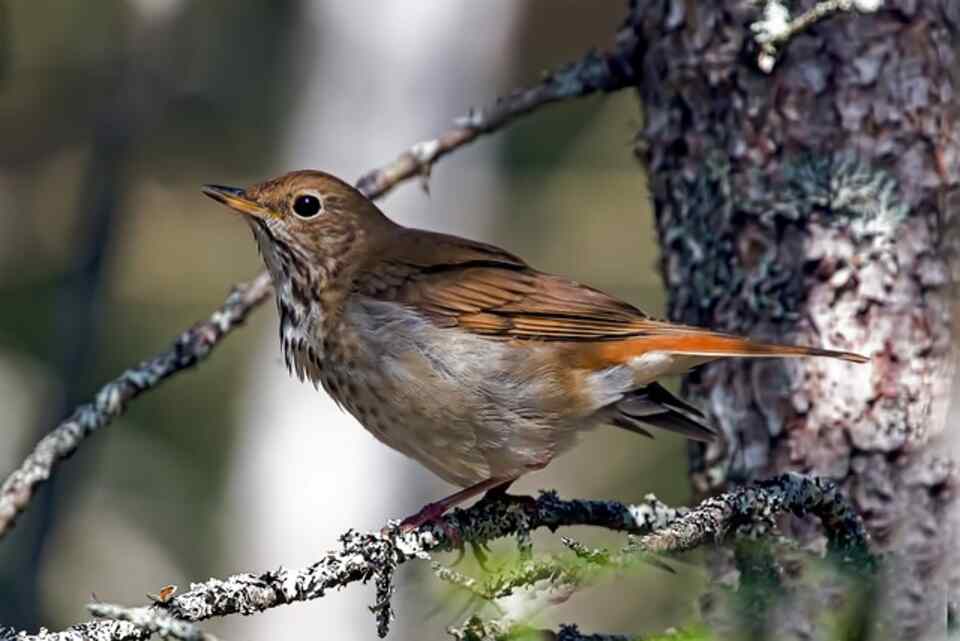
The Hermit Thrush, a woodland bird native to North America, is celebrated for its hauntingly beautiful song. Often described as ethereal and flute-like, the Hermit Thrush’s song consists of clear, pure notes that descend in a series of melancholic phrases. Its musical performance is particularly enchanting during the breeding season, when males sing to attract mates and establish territory. The Hermit Thrush’s ability to evoke a sense of tranquility and natural harmony through its song has made it a favorite among birdwatchers and composers alike, adding a serene and melodic presence to forested habitats across its range.
Key Features:
- Song Characteristics: Flute-like, spiral-like song with clear, pure tones
- Habitat: Coniferous and mixed forests across North America
- Best Time to Hear: Early morning and evening during breeding season (April to August)
8. European Goldfinch (Carduelis carduelis)
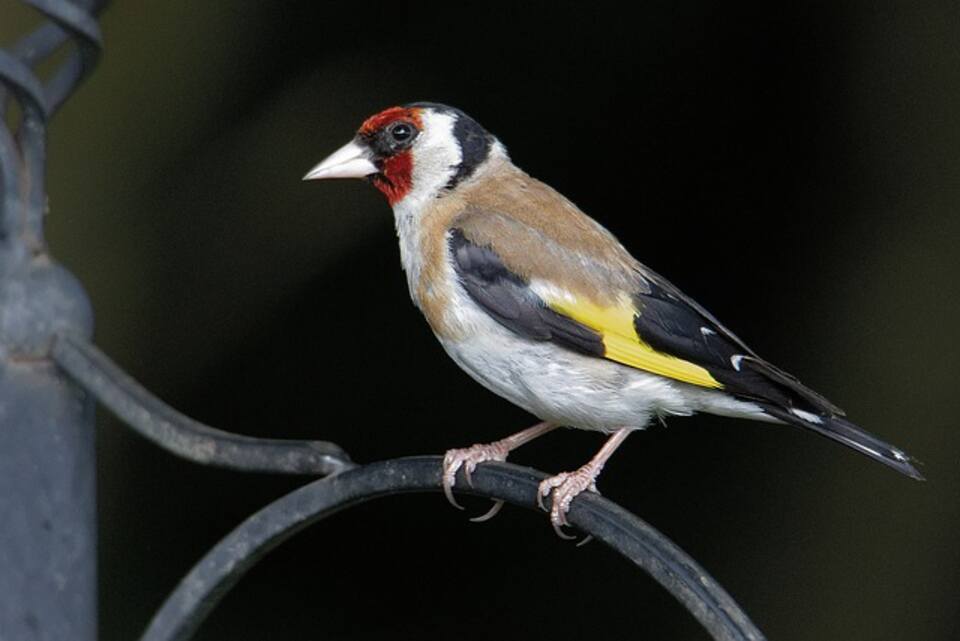
The European Goldfinch, known for its vibrant plumage and delightful song, captivates listeners with its melodious and tinkling vocalizations. Its song is a mix of cheerful twittering and trilling notes, often delivered in a rapid and rhythmic sequence. The Goldfinch’s vocal repertoire includes a variety of sounds, from sweet whistles to soft warbles, making it a charming presence in gardens and parks across Europe. Its musical talents, combined with its striking appearance, have endeared the European Goldfinch to birdwatchers and nature enthusiasts, adding color and melody to the European avian landscape.
Key Features:
- Song Characteristics: Series of tinkling, liquid notes and trills
- Habitat: Gardens, orchards, and open woodlands across Europe and parts of Asia
- Best Time to Hear: Spring and summer, especially during courtship
9. Mockingbird (Mimus polyglottos)

The Northern Mockingbird, renowned for its impressive vocal abilities, is celebrated for its remarkable song. This bird is known for its ability to mimic the songs of other bird species, as well as various sounds from its environment, including car alarms, sirens, and even cell phones. The Mockingbird’s song is a complex medley of phrases and imitations, often delivered in rapid succession. Its repertoire can include up to 200 different sounds, making each performance a unique blend of melodies and calls. The Mockingbird’s vocal prowess and adaptability have made it a beloved fixture in urban and suburban areas across North America, where its spirited and varied song adds a lively soundtrack to daily life.
Key Features:
- Song Characteristics: Varied repertoire of songs mimicking other birds and even mechanical sounds
- Habitat: Urban and suburban areas across North and South America
- Best Time to Hear: Year-round, with increased activity during breeding season
10. Veery (Catharus fuscescens)

The Veery, a small thrush native to North America, is celebrated for its hauntingly beautiful song. Its melodious and ethereal vocalizations consist of clear, flute-like notes that descend in a series of melancholic phrases. The Veery’s song is often described as serene and evocative, adding a tranquil and enchanting atmosphere to the forested habitats it inhabits. During the breeding season, males sing to attract mates and establish territories, their musical performances echoing through the dense understory. The Veery’s ability to evoke a sense of natural harmony through its song has made it a favorite among birdwatchers and nature enthusiasts alike, symbolizing the beauty of North American woodlands.
Key Features:
- Song Characteristics: Flute-like, downward-spiraling song with a reverberation-like quality
- Habitat: Deciduous and mixed forests in North America
- Best Time to Hear: Late evening and early morning during breeding season (May to July)
Comparison of Beautiful Bird Songs
To help you better understand the differences between these melodious birds, here’s a comparative table:
| Bird Species | Song Duration | Pitch Range | Complexity | Best Time to Hear |
|---|---|---|---|---|
| Common Nightingale | 2-4 minutes | Wide | Very High | Night, Early Morning |
| Wood Thrush | 1-2 seconds | Medium | High | Dawn, Dusk |
| European Blackbird | 2-3 minutes | Medium | High | Morning, Evening |
| Rose-breasted Grosbeak | 1-3 seconds | Medium | Medium | Daytime |
| Australian Magpie | 30 seconds – 2 minutes | Wide | High | Year-round |
| Eurasian Skylark | Up to 20 minutes | Wide | Very High | Daytime |
| Hermit Thrush | 1-2 seconds | High | High | Morning, Evening |
| European Goldfinch | 8-10 seconds | High | Medium | Daytime |
| Mockingbird | Variable | Wide | Very High | Day and Night |
| Veery | 1-2 seconds | Medium | Medium | Evening, Early Morning |
The Science Behind Beautiful Bird Songs
Understanding the mechanics and purpose of bird songs can deepen our appreciation for these natural melodies.
Anatomy of a Songbird
Songbirds have a specialized vocal organ called the syrinx, located at the junction of the trachea and bronchi. This unique structure allows them to produce complex sounds and even sing two notes simultaneously.
Learning and Development
Many songbirds learn their songs through a process similar to how humans learn language:
- Memorization: Young birds listen to and memorize adult songs.
- Practice: They begin to produce rudimentary versions of the songs.
- Refinement: Through continued practice and feedback, they perfect their songs.
Purpose of Bird Songs
Bird songs serve several important functions:
- Mate Attraction: Males often use songs to attract females and demonstrate their fitness.
- Territory Defense: Songs help establish and maintain territories.
- Species Recognition: Distinct songs help birds identify members of their own species.
- Communication: Songs and calls convey various messages within bird communities.
How to Appreciate Beautiful Bird Songs
To fully enjoy the melodies of these feathered virtuosos, consider the following tips:
- Learn to Identify: Familiarize yourself with the songs of common birds in your area.
- Use Technology: Download bird identification apps that can help you recognize songs.
- Time Your Outings: Many birds are most vocal during the “dawn chorus” just before sunrise.
- Create a Bird-Friendly Environment: Attract songbirds to your yard with appropriate food, water, and shelter.
- Practice Active Listening: Focus on the nuances of each song, noting rhythm, pitch, and patterns.
Conservation and the Future of Bird Songs
As beautiful as these avian melodies are, many songbird species face threats from habitat loss, climate change, and other human activities. Conservation efforts are crucial to ensure that future generations can enjoy these natural symphonies.
How You Can Help
- Support Conservation Organizations: Donate to or volunteer with groups dedicated to bird conservation.
- Create Bird-Friendly Spaces: Plant native species and avoid using pesticides in your garden.
- Reduce Window Collisions: Use bird-safe window treatments to prevent collisions.
- Keep Cats Indoors: Domestic cats are a major threat to songbirds.
- Participate in Citizen Science: Join bird counting projects to help researchers monitor populations.
Conclusion
The world of beautiful bird songs is vast and varied, offering endless opportunities for wonder and appreciation. From the haunting melody of the wood thrush to the complex warbles of the Australian magpie, these avian vocalists remind us of the incredible diversity and beauty of the natural world. By taking the time to listen, learn, and protect these feathered musicians, we can ensure that their songs continue to enrich our lives and our ecosystems for generations to come.
Whether you’re an experienced birder or simply someone who enjoys the sounds of nature, we hope this guide has deepened your appreciation for the birds with the most beautiful songs. Next time you step outside, take a moment to listen – you might just hear one of these melodious marvels sharing its song with the world.



